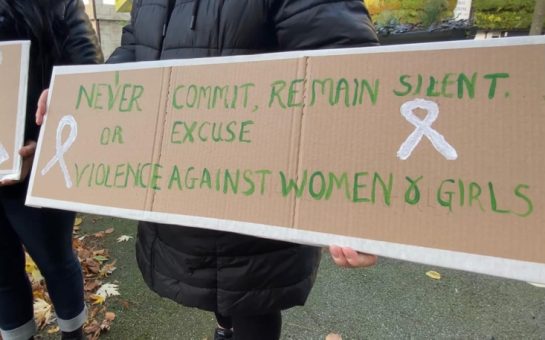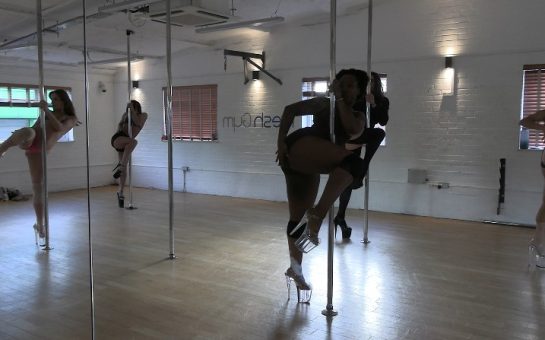Reviews are divided as to whether Hollywood’s latest expose, ‘She Said’ is inspirational or glamourising burnout culture.
‘She Said’ is the true story of the two New York Times journalists, Megan Twohey and Jodi Kantor, who investigated both historic and contemporary sexual abuse allegations against Harvey Weinstein.
The shocking story also served as a catalyst for the #MeToo movement, shattering decades of silence in Hollywood and internationally.
The film, directed by Maria Schrader, is respectful in its portrayal of the stories of survivors, centring their narratives and words.
With streams of positive reviews and an average ranking of 87% approval on Rotten Tomatoes, the film has also received nominations for the 2023 Golden Globe and Critics’ Choice awards.
While reviews on the central message of the film and acting have been unanimously positive, some have questioned whether the portrayal of investigative journalists, especially women, is more of a tail of burnout and shattered ideas of having a sense of work-life balance.
I spoke to journalist Charlotte Davis who was invited to a London premiere of ‘She Said’. Ms Davis is currently studying towards a Masters degree in Social Justice journalism at the London School of Communication, University of the Arts London.
As a young woman navigating the beginning of her career Charlotte initially found the film inspiring.
Following the premiere, she said: “Wow. I want to be doing that, writing these big stories, changing the world. Watching them unravelling as you write them. To be part of the movement pushing back against the establishment of big companies and people that seem so impenetrable.”
She appreciated the focus on the women’s narratives, saying: “The way they explored the stories of individual women to weave them into a bigger fabric was amazing; their experiences became even larger than the sum of their parts, through the changes they instigated.”
However, ‘She Said’ has also received a backlash from those who believe it glamourises burnout culture within investigative journalism.
Ms Davis highlighted the socio-economic themes at play, reflecting that the portrayal: “Appeared to be a very elite club of people with husbands who didn’t have to work all the time and had enough disposable income to facilitate child care.
“However, you do question whether a single mother in a similar role of seniority would be judged more harshly, with childcare not always so feasible in reality.”
The gender dynamics within a professional environment was a positive point for Ms Davis, with the two leads both women, and for once, two women not in competition.
This enabled them to share their vulnerabilities around postpartum depression and questioning more freely, with their authority not being questioned even when asking: “Do you wish you hadn’t taken this story on?”
The film also depicts the harsher gendered dynamics that female journalists often contend with, highlighting scenes of postpartum depression, childcare responsibilities and the emotional labour of motherhood.
Ms Davis admitted that: “It does make me worry that if I want to have a family, I would have to give up this type of career for something more steady and predictable.
“It’s suggesting that you can’t have a work-life balance in that situation, it is your life becomes the sacrifice.”
This critique was especially relevant to the film’s depiction of international travel; Twohey and Kantor were expected to be on cross-continental flights with less than a day’s notice repeatedly.
Ms Davis found this to be another point of contention between her desired career and desire for children, saying: “To get on a plane, not even knowing if you will even be able to interview the person, you don’t know the effects that that would have on your partner and family at such short notice.”
She questioned: “Work is important, but to what extent? Do you miss your wedding day because Greta Thunberg is in London and your career will take a hit if you say no?”
Similarly, there have been some criticisms directed at ‘She Said’ surrounding the lack of trigger warnings (TW) included due to the sensitive nature of discussions surrounding rape and sexual assault.
Charlotte said: “With the nature of the subject in question I was expecting a lot of detail, but I do think that the descriptions, in this situation could have been very triggering for some.”
While Charlotte concluded that the level of description was ultimately necessary to accurately portray the atrocities of Weinstein, she believed that more trigger warnings would have aided some viewer’s experience at the London premiere.
Overall, the film’s portrayal of post postpartum depression, which is often overlooked, provided an interesting secondary line, but the general neat conclusion negated the realities of many journalists.
Charlotte said: “They did glamourise it. The whole basis was built on getting the story published, yet a lot of the time you could do the same amount of work and it not pay off.”
Charlotte highlighted how a journalist’s job is not complete just because an article has been published, but only the beginning.
Perhaps cinematically this artistic choice was conscious, enabling the possibility of a sequel covering the aftermath of Weinstein and the birth of the #MeToo movement.
Speaking about filming, lead actress Kazan said: “It matters that the film is both directed and written by women. I don’t know that a man would have asked those questions about juggling parenthood, or about the experience of new motherhood.”
‘She Said’ undoubtedly provides a frank, survivor centred account of the horrors of Weinstein’s Hollywood.
Ms Davis’ feeling of inspiration following the film’s London premier was common, concluding: “As toxic as it is, I still want to be part of something so life changing that you can’t take time away from your investigation; something that forces you to be constantly available.”
Featured image credit: Haxorjoe via Creative Commons Attribution-Share Alike 3.0 Unported license.





